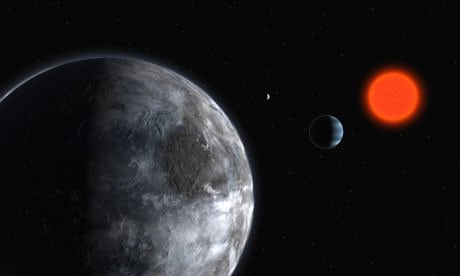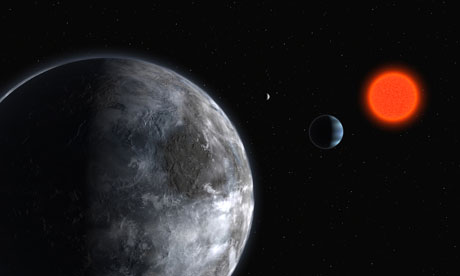Latest News
Alien encounters ‘within twenty years’

In the past few years, I noticed a trend in mass media I call the “Alien Agenda”. From movies to TV shows to music videos to video games, the masses appear to be “prepared” to a contact with alien civilization. Chances are, “they” already know a lot more about alien civilizations than the masses do. Here’s an article from The Guardian regarding the likely hood of alien contact within twenty years.
Alien encounters ‘within twenty years’
A top Russian astronomer say he expects humans to encounter extraterrestrial civilisations within the next two decades
Alien civilisations will be discovered within two decades, according to a top
Russian astronomer. Photograph: -/AFP/Getty ImagesRussian scientists expect humanity to encounter alien civilisations within the next two decades, a top Russian astronomer said on Monday.
“The genesis of life is as inevitable as the formation of atoms … Life exists on other planets and we will find it within 20 years,” said Andrei Finkelstein, director of the Russian Academy of Sciences’ Applied Astronomy Institute, according to the Interfax news agency.
Speaking at an international forum dedicated to the search for extraterrestrial life, Finkelstein said 10% of the known planets circling suns in the galaxy resemble Earth.
If water can be found there, then so can life, he said, adding that aliens would most likely resemble humans with two arms, two legs and a head.
“They may have different colour skin, but even we have that,” he said.
Finkelstein’s institute runs a programme launched in the 1960s at the height of the cold war space race to watch for and beam out radio signals to outer space.
“The whole time we have been searching for extraterrestrial civilisations, we have mainly been waiting for messages from space and not the other way,” he said.
In March a Nasa scientist caused controversy after claiming to have found tiny fossils of alien bugs inside meteorites that landed on Earth.
Richard Hoover, an astrobiologist at the US space agency’s Marshall space flight centre in Alabama, said filaments and other structures in rare meteorites appear to be microscopic fossils of extraterrestrial beings that resemble algae known as cyanobacteria.
Writing in the Journal of Cosmology, Hoover claimed that the lack of nitrogen in the samples, which is essential for life on Earth, indicated they are “the remains of extraterrestrial life forms that grew on the parent bodies of the meteorites when liquid water was present, long before the meteorites entered the Earth’s atmosphere.”
Will Katy Perry greet the alien by singing E.T.?
- Disney removes cartoon episode about transgender character: ‘It breaks my heart’
- Lauren Boebert probes UFO experts on existence of underwater alien bases on Earth: ‘The American people are being kept in the dark’
- Down with the old. Strangle, release..
- Why are people suddenly getting rare or late stage cancers?
- FLASHBACK: When Al Sharpton isn't busy saving black people from white devils, he is hanging with the elitists (which are mostly, if not all, mostly white).
- FLASHBACK: Greta Thunberg, autistic savior of the world, poses for i-D magazine (circa 2019)
- REMINDER: It's just a coincidence …
Get an e-mail notification as soon as a new article is published on The Vigilant Citizen.
-

 Latest News2 months ago
Latest News2 months agoThe Controlled Demolition of Diddy
-

 Music Business2 months ago
Music Business2 months agoThe Hidden Meaning of Katy Perry’s Highly Symbolic Performance at the 2024 VMAs
-

 Pics of the Month2 months ago
Pics of the Month2 months agoSymbolic Pics of the Month 09/24
-

 Movies and TV1 month ago
Movies and TV1 month agoAn In-Depth Look at the Hidden Meaning and Symbolism in “Blink Twice”
-

 Pics of the Month4 weeks ago
Pics of the Month4 weeks agoSymbolic Pics of the Month 10/24
-

 Music Business3 months ago
Music Business3 months agoSomething’s Terribly Wrong With Sabrina Carpenter and her Video “Taste”
-

 Movies and TV2 months ago
Movies and TV2 months agoAn In-Depth Look at the Dark Messages and Symbolism in “Longlegs”
-

 Latest News2 weeks ago
Latest News2 weeks agoKamala’s Campaign Was Objectively the Worst in Recent History


















